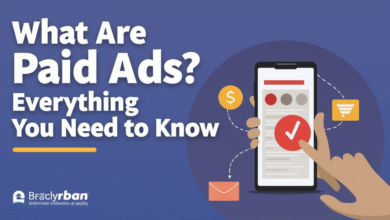Paid Per Click Advertising

Introduction
Opening Emotional Appeal:
If you’re a business owner or marketer, you’ve likely heard of paid per click (PPC) advertising. Maybe you’ve been hesitant to dive in, unsure if it’s the right strategy for your brand. You might even have tried it before but didn’t see the return you expected. You’re not alone – many businesses struggle to maximize their PPC investments. But imagine the ability to target your ideal customers directly, drive traffic to your site, and convert that traffic into sales, all while controlling your budget. That’s the power of PPC advertising. In this guide, we’ll walk you through everything you need to know to master PPC and use it to skyrocket your business success.
Table of Contents
Section 1: What is Paid Per Click Advertising?
Understanding the Basics of PPC Advertising
- Paid per click (PPC) is an online advertising model where advertisers pay a fee each time one of their ads is clicked.
- It’s commonly used in search engine advertising platforms like Google Ads and Bing Ads.
- The most well-known PPC advertising model is “cost-per-click” (CPC), where you only pay when someone clicks on your ad.
Why Should You Care About PPC?
- Instant visibility: Unlike organic search efforts, PPC ads appear immediately in search results.
- High targeting capabilities: PPC allows you to target ads based on keywords, location, device, demographics, and more.
- Measurable ROI: With PPC, you can track your results directly, allowing you to refine and optimize campaigns for the best performance.
Section 2: How Paid Per Click Advertising Works
The PPC Auction: A Simple Explanation
- The bidding process: When you create a PPC campaign, you bid on keywords related to your business. The higher your bid, the more likely your ad will be shown. But other factors, like quality score and ad relevance, also affect placement.
- Keywords: These are the words or phrases that users type into search engines when looking for products or services like yours.
- Ad Rank: Your position on the search results page depends on your bid amount and the quality score of your ad.
How Ads Are Displayed
- Search Engine Results Pages (SERPs): Ads appear at the top or bottom of Google search results or other search engines.
- Display Network: Ads can also appear on websites that are part of the advertising network (like Google Display Network).
- Remarketing Ads: You can target users who have visited your site but didn’t convert by displaying ads to them across the web.
Section 3: Types of Paid Per Click Ads
1. Search Ads
- These are the text-based ads that appear on search engine results pages (SERPs) when a user searches for specific keywords.
- Best for: Driving targeted traffic from users actively looking for products or services like yours.
2. Display Ads
- These are banner or image ads that appear on websites across the web, often as part of Google’s Display Network.
- Best for: Brand awareness and retargeting users who have previously visited your site.
3. Shopping Ads
- Shopping ads are typically shown when users search for specific products. They display an image of your product, its price, and your store name.
- Best for: E-commerce businesses that want to showcase products directly in search results.
4. Video Ads
- Video ads on platforms like YouTube are becoming increasingly popular. These ads allow you to reach a wide audience with engaging content.
- Best for: Brands looking to create visually compelling campaigns that drive engagement.
Section 4: Setting Up a Successful Paid Per Click Campaign
Step 1: Define Your Goals
- Do you want to increase website traffic, boost sales, or raise brand awareness? Defining your goals will help guide your PPC strategy.
- Tip: Always set specific, measurable goals (e.g., “Increase sales by 15% in 3 months”).
Step 2: Keyword Research
- Keywords are the backbone of any PPC campaign. Use tools like Google Keyword Planner or SEMrush to find relevant keywords for your industry.
- Tip: Focus on long-tail keywords for less competition and more targeted traffic.
Step 3: Write Compelling Ad Copy
- Your ad copy should be relevant to your target audience and include a strong call-to-action (CTA).
- Tip: Include keywords in your ad copy to improve relevancy and increase your Quality Score.
Step 4: Set Your Budget and Bids
- Set a daily or monthly budget and decide how much you’re willing to pay per click.
- Tip: Start with a small budget, then gradually increase as you learn more about your audience and what works.
Step 5: Monitor and Optimize
- Once your campaign is live, continuously monitor its performance. Look at key metrics such as CTR (click-through rate), CPC (cost per click), and conversion rates.
- Tip: Regularly A/B test your ad copy, landing pages, and bidding strategy to find the most effective combinations.
Section 5: Understanding the Metrics that Matter in PPC
Key Performance Indicators (KPIs) to Track
- Click-Through Rate (CTR): Measures how many users click on your ad after seeing it. A higher CTR means your ad is compelling.
- Cost Per Click (CPC): How much you’re paying each time someone clicks your ad. Lower CPC generally means better optimization.
- Conversion Rate: The percentage of visitors who take a desired action (like making a purchase or filling out a contact form).
- Return on Ad Spend (ROAS): This metric shows how much revenue you earn for every dollar spent on ads.
Section 6: Advanced PPC Strategies
1. Remarketing
- Remarketing allows you to target users who have visited your website or interacted with your ads but didn’t convert. It’s a powerful tool to re-engage potential customers.
- Tip: Create personalized ads that remind visitors of the products they viewed or abandoned in their cart.
2. Geo-Targeting
- With geo-targeting, you can show ads to users in specific locations, whether that’s a city, country, or within a certain radius of your business.
- Tip: Local businesses can greatly benefit from geo-targeting to attract nearby customers.
3. Dayparting
- This technique allows you to schedule your ads to run only during certain times of the day or days of the week.
- Tip: Use dayparting to focus your budget on times when your audience is most likely to convert.
Section 7: Common PPC Mistakes to Avoid
1. Failing to Set Clear Goals
- Without clear goals, it’s difficult to measure the success of your campaigns or know where to focus your efforts.
2. Targeting Too Broad of an Audience
- Avoid targeting too many keywords or too broad an audience. It’s important to be specific and focused to get the best ROI.
3. Ignoring Ad Quality
- High-quality, relevant ads are more likely to get clicked, improve your Quality Score, and reduce your CPC.
4. Not Testing and Optimizing
- PPC requires ongoing testing and optimization to remain effective. Never set it and forget it!
Conclusion
Paid per click advertising offers businesses like yours the chance to reach your ideal audience, drive qualified traffic, and grow your sales quickly. By understanding how PPC works, setting clear goals, optimizing your campaigns, and avoiding common mistakes, you can unlock its full potential. Ready to get started? If you haven’t yet launched a PPC campaign, now’s the perfect time to begin. Don’t let your competitors outbid you for those valuable clicks—take action today!



